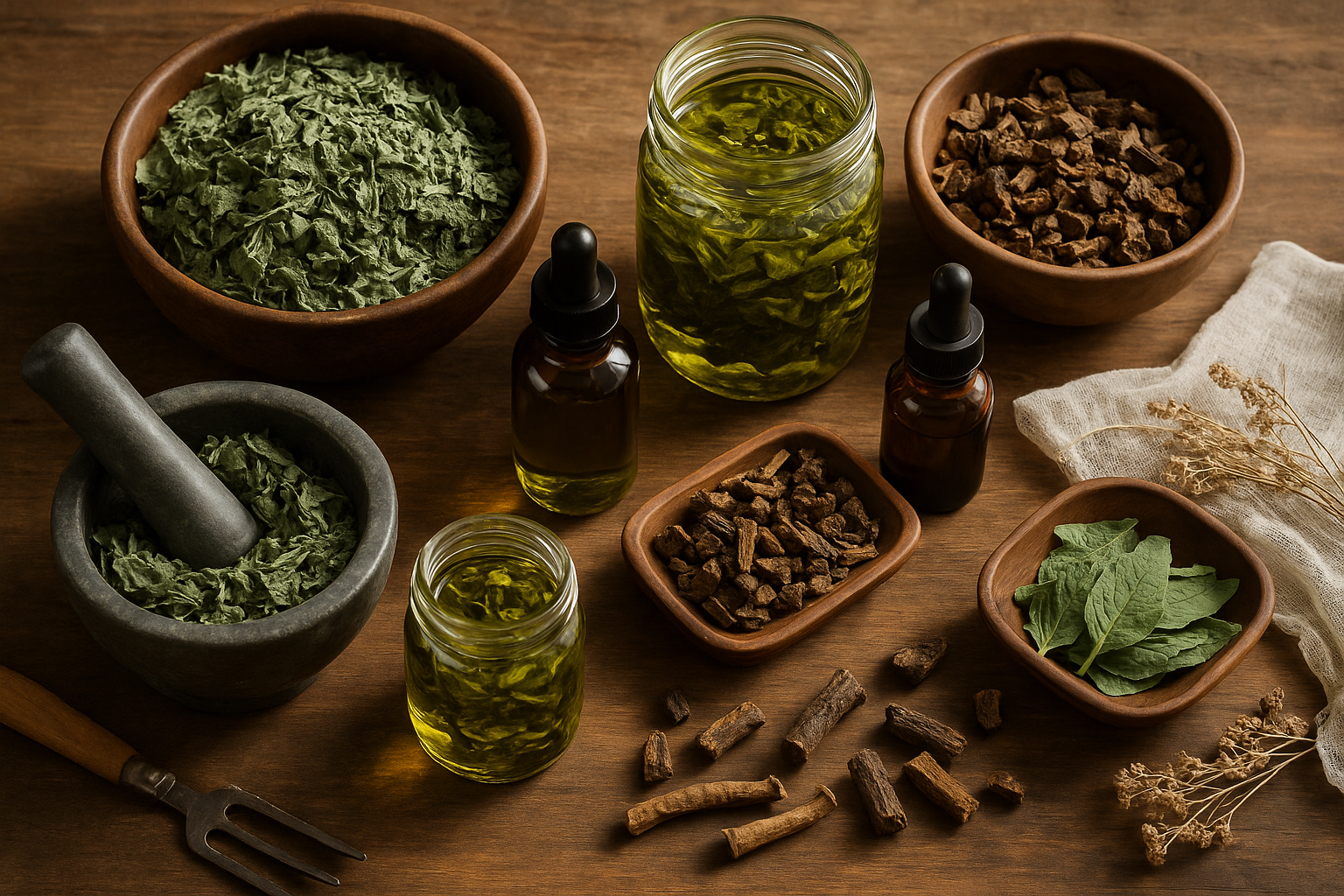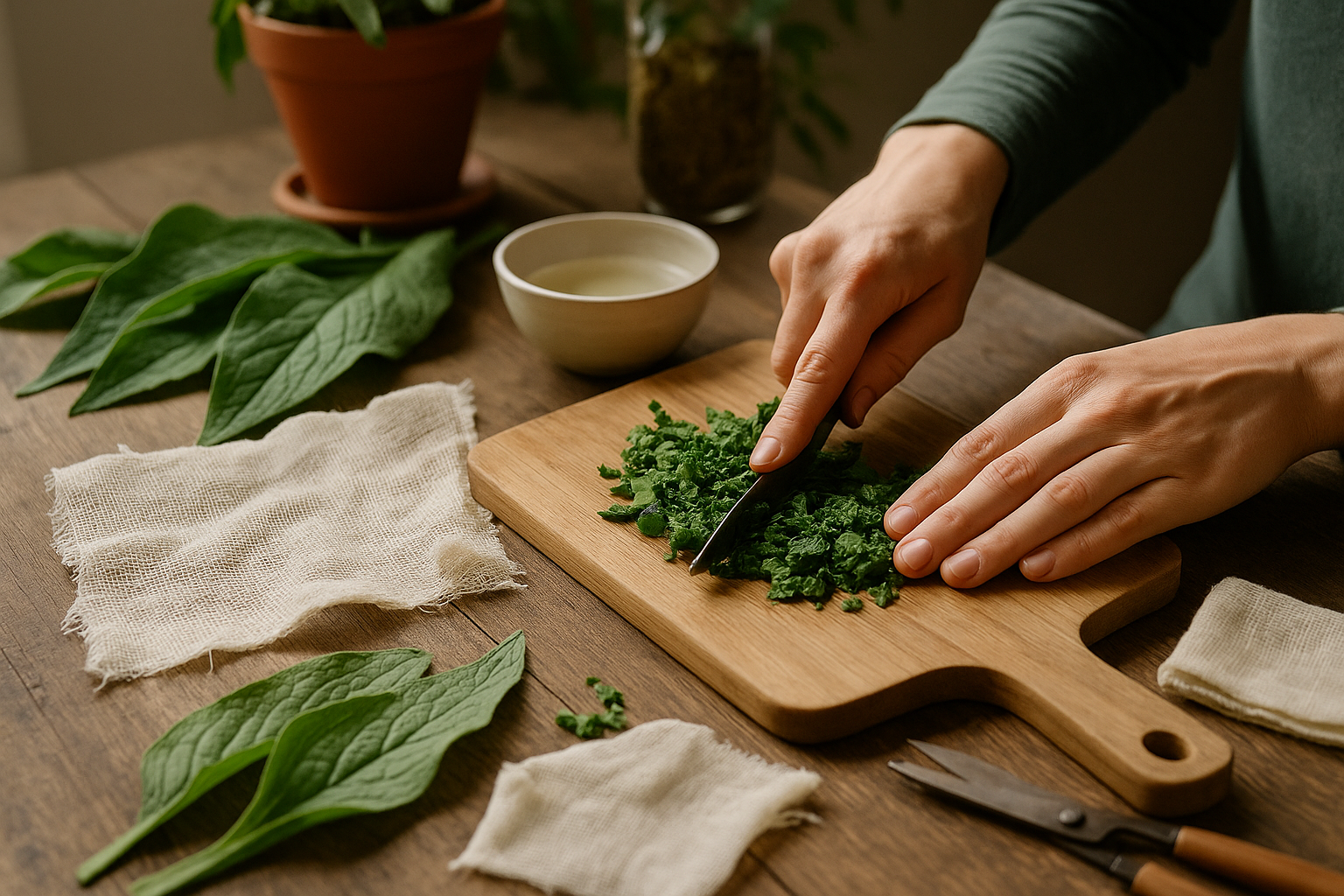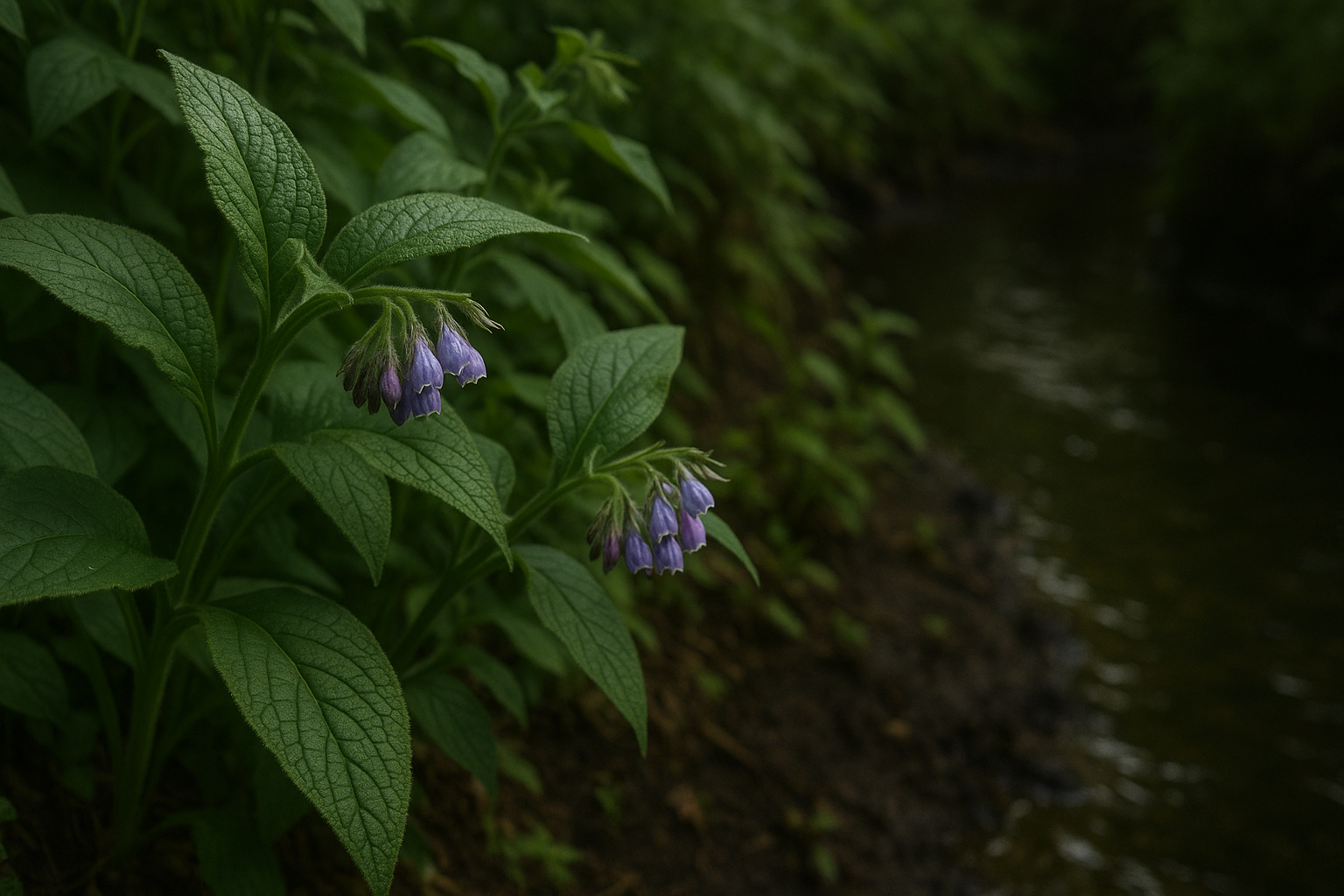Introduction to Comfrey
If you’ve ever explored natural remedies for aches, bruises, or minor sprains, you might have come across the phrase “comfrey for healing.” For centuries, comfrey has been a prized herb in traditional medicine, cherished for its ability to soothe sore muscles, accelerate the repair of broken bones, and support wound healing. Sometimes called “knitbone,” comfrey’s roots and leaves have been used across Europe and Asia, passed down through generations as a trusted home remedy.
Herbalists today still rely on comfrey, finding it a valuable addition to salves or compresses for everything from gardening injuries to sports-related bumps. Its relevance remains strong in modern herbal practices, especially as more people turn to plant-based solutions for everyday first aid. However, comfrey’s healing potential comes with important safety caveats—certain compounds in the plant, like pyrrolizidine alkaloids, mean it should never be taken internally, and topical use only is strongly advised.
In this post, we’ll explore comfrey’s fascinating history, from its clinical use by ancient Greeks to its modern-day application in natural home care kits. You’ll learn how to make simple salves, poultices, and teas with comfrey, along with key tips for using it safely and effectively. Whether you’re a seasoned herbalist or just dipping your toes into plant remedies, understanding how to use comfrey for healing is a valuable skill—one that bridges traditional wisdom with present-day wellness needs.
Understanding Comfrey

Comfrey (Symphytum officinale) is a hardy perennial herb easily recognized by its large, broad, hairy leaves and clusters of small, bell-shaped flowers that vary in color from purple and blue to creamy yellow. It typically grows wild along riverbanks, in damp meadows, and other moist, rich soils throughout Europe and temperate regions of Asia and North America. Comfrey thrives in environments with plenty of water and partial shade.
What makes comfrey especially valuable—even legendary—in herbal medicine are its potent compounds. Allantoin stands out for its remarkable skin-regenerating properties; it encourages the growth of new cells, making it excellent for healing minor wounds, scrapes, and burns. Another key compound is rosmarinic acid, a natural anti-inflammatory and antioxidant that helps calm redness and swelling when applied topically.
However, comfrey also contains pyrrolizidine alkaloids (PAs), which, while naturally occurring, are toxic to the liver if ingested or used on broken skin over long periods. Because of these risks, modern herbalists recommend using comfrey-based creams and salves only on unbroken skin and for short durations.
For example, gardeners often use DIY comfrey salves to soothe sore muscles or bruises after a long day outdoors—benefiting from its unique chemistry while staying mindful of safe usage. Ultimately, comfrey’s combination of cell-healing allantoin and soothing rosmarinic acid explains its lasting popularity in home remedies. However, anyone using it should be aware of potential PA toxicity and always follow safe application guidelines.
Forms of Comfrey in Herbal Remedies
Comfrey is a versatile herb used in many forms to address specific health needs, with each option offering unique benefits and preparation methods.
Fresh comfrey leaves are often used as a poultice: simply crush the leaves and apply them directly to bruises or minor sprains for potential soothing effects.
Dried comfrey root, available at herbal shops, is commonly steeped into teas or used in homemade ointments, though internal use is generally discouraged due to safety concerns.
Comfrey extracts, which are highly concentrated liquids, can be found as tinctures or added to topical formulas—these are especially popular for convenience and precise dosing, particularly for skin conditions.
Comfrey-infused oils are made by soaking leaves or roots in a carrier oil; these are easy to use for massages to help relieve muscle aches.
Salves and creams, perhaps the most accessible commercial forms, blend comfrey with other calming herbs and are ideal for daily application to sore muscles, minor wounds, or irritated skin.
When purchasing commercial comfrey products, look for those labeled “external use only” and avoid anything advertised for internal consumption.
High-quality comfrey products should display the botanical name (Symphytum officinale), list active ingredients, and provide clear instructions for use.
Opt for reputable brands that follow third-party testing or certifications to ensure purity and safe alkaloid levels.
Reading labels carefully and checking online reviews can help you find products that are both effective and trustworthy.
Safe and Effective Ways to Use Comfrey

Comfrey has a long history as a healing herb, especially for skin and musculoskeletal issues. Today, experts recommend using it only externally. For sprains, bruises, and minor wounds, comfrey can be made into compresses, poultices, salves, or creams.
To make a compress, steep dried comfrey leaves in hot water, soak a clean cloth, and apply it to the affected area for 15-20 minutes, up to three times daily. Poultices are simple: mash fresh leaves (or rehydrate dried ones), wrap them in cheesecloth, and place directly on the skin. Salves and creams—available at most health stores—offer convenient ways to deliver comfrey’s soothing effects without the mess; just follow the product’s instructions.
Always use comfrey on unbroken skin and never on deep wounds, as the plant can promote skin healing so quickly it could trap infection underneath.
Safety Concerns with Internal Use
Modern research has raised valid safety concerns regarding internal use of comfrey. The plant contains pyrrolizidine alkaloids, compounds shown to harm the liver and possibly cause cancer if ingested. Because of this, herbalists and medical professionals strongly discourage drinking comfrey tea or taking it by mouth under any circumstances, no matter how small the dose.
For safe home care, stick to external applications for one to two weeks at a time, allow skin to fully air out between uses, and discontinue if you notice any irritation.
Choosing the Right Preparation for Your Injury
When selecting a product or preparation method, match the format to the injury:
- Compresses and poultices work well for larger bruises or sprained joints.
- Targeted creams and salves are better for small abrasions and sore muscles.
Remember: less is more—use only as needed, and consult a doctor if symptoms worsen or don’t improve within several days. Always perform a patch test before applying comfrey widely to the skin to check for allergic reactions.
Safety, Precautions, and Side Effects
Comfrey is a popular herbal remedy, but its use comes with serious safety concerns, primarily due to compounds called pyrrolizidine alkaloids (PAs). These natural chemicals can cause liver toxicity when absorbed into the body, especially if comfrey is taken by mouth or applied to broken skin. Over time, even small amounts of PAs can build up and potentially lead to severe conditions such as liver failure, cirrhosis, or even cancer.
Because of these risks, comfrey is not recommended for certain groups. Children, pregnant and breastfeeding women, and anyone with liver disease should completely avoid comfrey in all forms—both topical and oral. Healthy adults should also steer clear of ingesting comfrey or using any products made from the roots, which can contain higher concentrations of PAs.
Safer use involves only applying creams made from PA-free (or “de-pyrrolizidined”) extracts to unbroken skin for a short period. Some common side effects to watch for include rashes, skin irritation, or allergic reactions. However, more serious signs of liver trouble—such as yellowing of the skin or eyes (jaundice), abdominal pain, nausea, or extreme tiredness—mean you should stop use immediately and consult a doctor.
Always read product labels carefully, look for certified PA-free versions, and check with your healthcare provider before trying comfrey, especially if you take other medications or have any chronic health issues.
Comfrey in Context
Recent scientific evidence highlights both the potential benefits and risks of using comfrey. While comfrey contains compounds—like allantoin—that can speed wound healing and reduce inflammation, research has shown it also contains pyrrolizidine alkaloids (PAs), which can cause serious liver damage if absorbed in large amounts or used over extended periods.
Because of this risk, most health authorities advise against ingesting comfrey or applying it to broken skin. Instead, if you’re looking for safe, effective herbal remedies, consider alternatives like calendula or arnica. Both are well-researched for topical use and offer anti-inflammatory and healing properties without the risks associated with comfrey.
If you decide to use comfrey, protect yourself by following these best practices:
- Only use comfrey externally and never on open wounds.
- Choose comfrey products that are certified PA-free.
- Limit use to small skin areas for no more than two weeks at a time.
- Never use comfrey if you’re pregnant, breastfeeding, or have liver issues.
- Perform a patch test before widespread application.
- Always consult your healthcare provider before trying new herbal remedies.
By staying informed and cautious, you can safely benefit from nature’s healing plants while minimizing potential harm.
